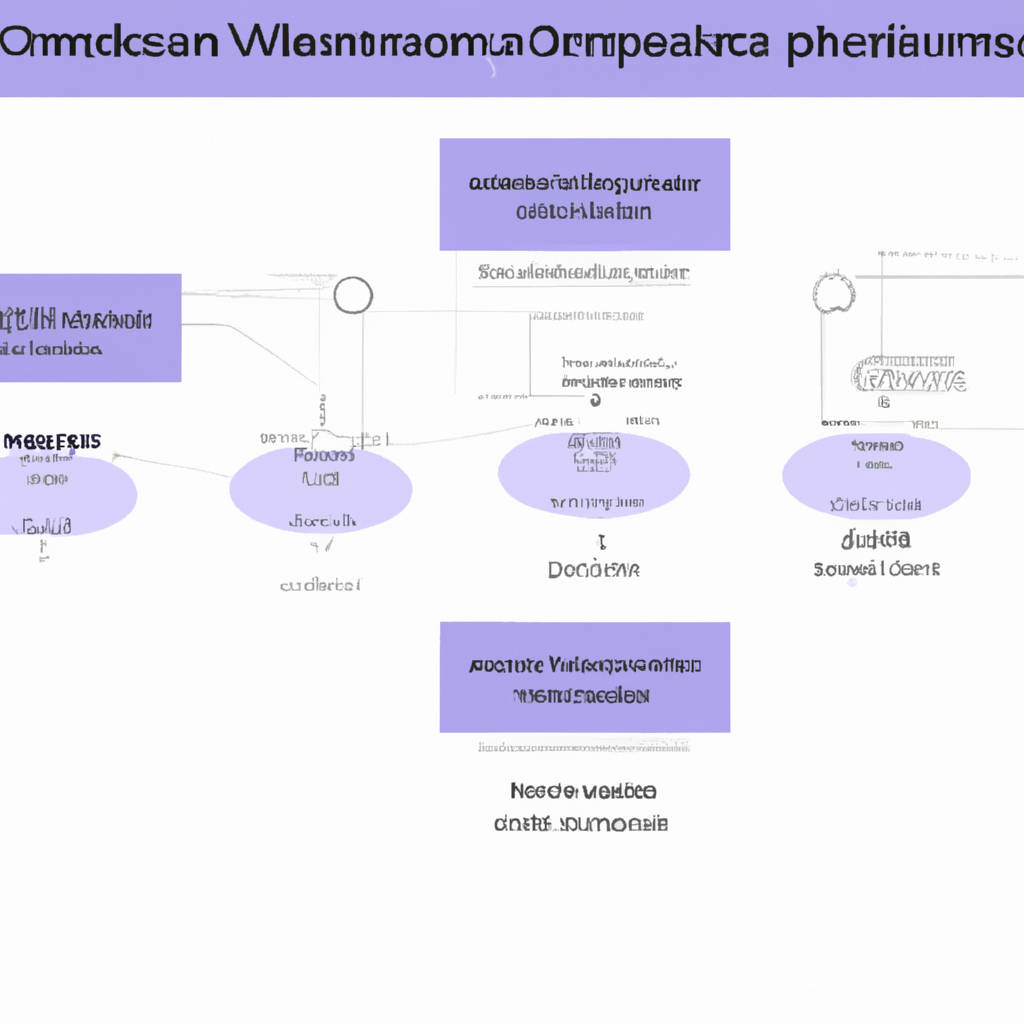Exporting Insomnia HTTP Collections into Bruno can be a seamless process if executed correctly. This comprehensive guide will demystify the steps and ensure a smooth transition of HTTP collections. Insomnia, a desktop API client for debugging and testing HTTP services, allows developers to construct complex HTTP requests quickly, organize them in collections and even share them among team members. However, there might be scenarios when you would want to transfer these HTTP collections into Bruno, another powerful tool for designing APIs and testing them. Bruno facilitates easy sharing and synchronization of these collections across teams, making it a preferred choice in certain situations. The process of exporting from Insomnia to Bruno starts with exporting the data from Insomnia in JSON format. The export feature is easily accessible from the dashboard. Once the data is exported, it can be imported into Bruno using the import feature. While importing, ensure to select the Insomnia collection format. Bruno will automatically convert the Insomnia collections into its native format. It is important to note that some modifications may be required in Bruno to match the exact settings of Insomnia. For instance, if the Insomnia collection uses a specific environment, it should be created in Bruno too. Furthermore, the response tests created in Insomnia may need to be recreated in Bruno. In conclusion, the process of exporting Insomnia HTTP collections into Bruno, while not overly complicated, requires careful execution. This guide serves as a step-by-step approach to successfully transfer your HTTP collections and continue your API design and testing seamlessly.

Why Choose Bruno for Your HTTP Collections?
Choosing Bruno for your HTTP collections offers a host of advantages. Firstly, Bruno provides an intuitive and user-friendly interface that simplifies the process of HTTP collection. This platform caters to both novices and seasoned professionals, making it a versatile tool for all users. Additionally, Bruno has an impressive track record of reliability and efficiency, ensuring that your HTTP collections are consistently accurate and timely.
Moreover, Bruno offers advanced features such as customizable options and automation, which can significantly streamline your HTTP collection process. These features can help save time and reduce the possibility of errors, which can be crucial in large-scale or time-sensitive projects. Bruno also has a robust support system, providing users with access to comprehensive guides and a dedicated customer service team that can promptly answer queries and resolve issues.
One of the standout features of Bruno is its commitment to security. The platform employs stringent measures to safeguard your data from potential threats and breaches. This includes encryption protocols and regular system updates to keep up with the latest security developments. Furthermore, Bruno has a transparent privacy policy and guarantees that your data will not be shared without your consent, giving you peace of mind about your data’s safety.
Lastly, Bruno is scalable and flexible, capable of handling diverse HTTP collection needs. Whether you are dealing with small-scale projects or managing large volumes of data, Bruno can easily adapt to your requirements. This scalability ensures that Bruno remains a useful tool as your HTTP collection needs evolve over time.
In conclusion, choosing Bruno for your HTTP collections equates to choosing a reliable, efficient, and secure platform. Its user-friendly interface, advanced features, robust support system, and commitment to data security make it an excellent choice for any HTTP collection needs.
Step-by-Step Guide to Exporting Insomnia Collections
Insomnia is a popular API client that simplifies the process of designing, debugging, and testing APIs. An integral feature of this platform is that it allows users to create collections or groups of related requests and environments. However, there comes a time when one needs to export these collections for various reasons such as sharing with team members or simply as a backup. To export Insomnia collections, you first need to open Insomnia and select the workspace containing the collection you want to export. On the dashboard, find the collection under the ‘Collections’ section. Click on the three dots next to the collection name and select ‘Export’. A dropdown menu will present you with two options: ‘Current Workspace’ and ‘All Workspaces’. If you want to export the entire workspace, choose ‘Current Workspace’. But if you want to export all your collections, then choose ‘All Workspaces’. Upon making your selection, a pop-up window will appear prompting you to save your file. Choose the location where you want to save your exported collection and then click ‘Save’. The exported file will be in JSON format, which can be easily imported back into Insomnia or shared with others. It’s crucial to note that the exported file will contain all the data within the collection, including environment variables and any unsaved changes. Always ensure that sensitive data is removed or obfuscated before exporting. This step-by-step guide to exporting Insomnia collections allows you to manage your API collections efficiently, while maintaining consistency and collaboration across your team.

How to Install Bruno Easily
Installing Bruno is a relatively straightforward process that even beginners can handle with ease. First, you need to ensure your device meets the minimum system requirements. The software is compatible with various operating systems such as Windows, Linux, and Mac. Once you’ve confirmed your device’s compatibility, head over to the official Bruno website. Navigate to the download section and select the version that corresponds to your operating system. Click on the ‘Download’ button and the software will start downloading.
Once the download is complete, locate the downloaded file in your device’s download folder. Double-click on the file to initiate the installation process. A setup wizard will appear, guiding you through the necessary steps. Follow the prompts, making sure to read and understand each step before proceeding. During the setup process, you’ll be asked to agree to Bruno’s terms of service. Review the terms carefully before clicking ‘Agree’.
Next, you’ll be prompted to choose the installation directory. You can go with the default location or select a different folder of your choice. After selecting the directory, click ‘Next’ to proceed. The installation process will begin, and a progress bar will appear, indicating the status of the installation. Be patient as the software installs, as this may take a few minutes depending on your device’s speed.
Once the installation is complete, click on the ‘Finish’ button. You may be asked to restart your device to complete the setup. After restarting your device, you can find Bruno in your applications list. Double click on the icon to launch the software. If you encounter any issues during the installation, refer to the Help section on Bruno’s official website or reach out to their customer support team. Bruno is a useful tool, and now that you’ve successfully installed it, you can start benefiting from its features.
Subscribe for More Expert Tips
In today’s digital era, subscribing for more expert tips can be an incredibly beneficial move. It opens vast doors of knowledge, skills, and insights into various fields of interest that could potentially enhance your personal or professional life. Whether you are passionate about technology, fitness, cooking, photography, or business strategies, subscribing to expert tips offers a wealth of information right at your fingertips. Many online platforms, blogs, websites, and even social media channels offer subscriptions to their content, where they share valuable tips from industry experts. These subscriptions, often in the form of newsletters, videos, podcasts, or articles, provide an opportunity to learn from those who have achieved success in their respective fields. By subscribing, you gain access to a treasure trove of practical advice, innovative techniques, and unique perspectives that you can apply to your endeavors. The beauty of these subscriptions lies in their convenience and accessibility. You receive regular updates, usually via email, which you can peruse at your own pace and in the comfort of your own space. Moreover, these expert tips are typically distilled from years of experience and knowledge, thus saving you the time and effort of learning through trial and error. Whether you’re an entrepreneur seeking growth strategies, an aspiring chef looking for culinary tricks, a fitness enthusiast in search of workout routines, or simply a curious mind eager to broaden your knowledge, subscribing for more expert tips can be a game-changer. So, take a step towards enhanced learning and growth by exploring subscriptions that cater to your interests and needs. Remember, in the world of information, knowledge is power, and subscribing to expert tips can equip you with the power to succeed.

Minimizing Churn with Stripe and ChatGPT Integration
Minimizing churn is a critical aspect of any subscription-based business. Integrating the artificial intelligence (AI) model, ChatGPT with Stripe, a leading online payment processing platform, can help businesses achieve this goal. ChatGPT can be designed to interact with customers, understand their concerns, answer their queries, and handle their complaints, thereby enhancing the customer experience. It can be used to send personalized communications to customers, reminding them of their subscription renewals, notifying them of any changes in their subscription plans, or informing them about any upcoming promotions. These interactions can help keep the customers engaged and satisfied, thereby reducing the chances of them canceling their subscriptions. On the other hand, Stripe integration simplifies the payment process for customers, providing them with a seamless and hassle-free payment experience. It allows customers to make payments using various methods, thereby offering them the flexibility and convenience they desire. The combination of these two technologies – the intelligent customer interaction capabilities of ChatGPT and the efficient payment processing features of Stripe – can help businesses significantly reduce their churn rates. This not only helps in retaining existing customers but also aids in attracting new ones, thereby ensuring a steady flow of revenue for the business. By leveraging the power of AI and advanced payment processing, businesses can improve their customer retention strategies and foster customer loyalty, thereby ensuring their long-term success in the competitive market.
Using Your Own OAuth Clients with Bruno
Using your own OAuth clients with Bruno offers a range of benefits, primarily the capacity to provide secure authentication for your applications. OAuth, or Open Authorization, is a standard protocol for authorization that allows third-party services to exchange your information without directly sharing your credentials. By incorporating your own OAuth clients with Bruno, you can effectively manage access to your applications. This approach allows you to control which data your applications can access, ensuring that only authorized parties can retrieve sensitive information. With Bruno, the process is simplified, making it easier for developers to incorporate this security measure. It’s crucial to note that using your own OAuth clients is not about taking shortcuts in security, but rather enhancing it. It provides a robust layer of protection, ensuring that your applications and your users’ data are safe from unauthorized access. Furthermore, Bruno provides a streamlined interface for managing OAuth clients, making it an efficient tool for developers aiming to incorporate this level of security into their applications. Therefore, using your own OAuth clients with Bruno is a strategic move that can greatly enhance the security and integrity of your application.

Building an Effective Out-of-Office Reminder System
Implementing an efficient out-of-office reminder system is an essential aspect of any organization, as it aids in ensuring a smooth workflow and sustained productivity, even when key employees are unavailable. This system serves as a communication tool that informs both internal staff and external clients about the unavailability of a specific employee due to leave, vacation, or any other reason. An effective reminder system should be clear, precise, and informative, providing all the necessary details including the duration of the absence, return date, and alternative contact person. It is also critical to set up an automatic reply system for emails to notify the sender about the recipient’s unavailability. Additionally, integrating this system with the company’s calendar or scheduling software can further enhance its efficiency. Moreover, the reminder system should be easy to use and accessible, allowing employees to activate it effortlessly whenever required. However, it is crucial to balance the need for transparency with privacy considerations, ensuring that personal information is not unnecessarily disclosed. Training is also a significant component in building an effective system; employees should be educated on how to accurately use this tool, and the importance of doing so. Regular audits can also be beneficial in maintaining the system’s effectiveness and making necessary improvements. In conclusion, an effective out-of-office reminder system not only optimizes workflow and productivity but also upholds the professional image of the organization.